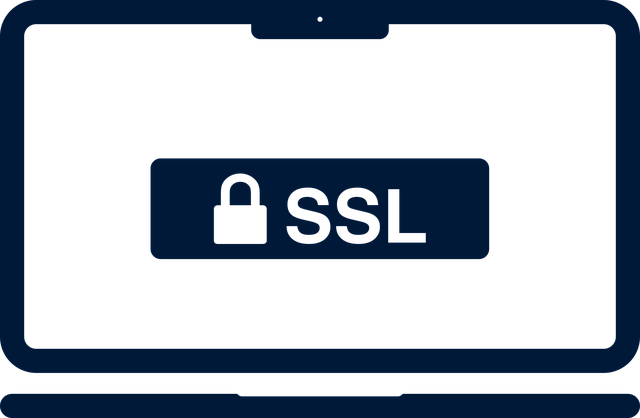With the ever-growing risk of malicious software, data breaches, and other online security threats, safeguarding your website is more important than ever before. To help protect yourself from these dangers we have created a tutorial on the top practices for web security with SSL certificates and encryption technologies, if you take note of its guidance then you can drastically reduce vulnerability while keeping your site secure. Now let’s get started on protecting ourselves!
Understand SSL and its Benefits!
SSL, or Secure Sockets Layer, is an encryption mechanism that creates a secure connection between the browser and server. With SSL in your website server, it’s much more difficult for hackers to intercept sensitive data such as credit card numbers, passwords, & other private/confidential information. Thus, websites with SSL are considered much more secure than those without.
In addition to providing enhanced security for your website and its users, employing SSL also offers other benefits:
- Improved SEO Rankings: Google has begun favouring sites that use HTTPS over HTTP in its search engine results pages (SERPs). This means that having an SSL certificate can boost your ranking compared to competing websites that lack one.
- Increased User Trust: Seeing SSL on your website can give customers peace of mind; it also shows them that you take their safety and the safety of their data seriously, which can increase customer loyalty.
- Compliance with Data Protection Laws: Many countries have established regulations requiring certain websites to use SSL encryption; an SSL certificate helps ensure that your site meets any relevant legal requirements.
Overall, using HTTPS and having a valid SSL certificate is important for securing your website and giving it a greater sense of professionalism and trustworthiness; that’s why it’s essential to understand best practices for initiating and maintaining a secure connection through Secure Sockets Layer (SSL) Encryption.
Practices for Securing Your Website with SSL
- Choose an Appropriate Certificate for Your Website
SSL certificates vary in terms of the level of security they offer and their cost. It is essential to select a certificate that meets your website’s security needs as well as fits into your budget. When choosing an SSL certificate, consider factors such as encryption levels, validation options, warranty coverage, and support offered by the provider.
- Generate a CSR and Private Key
To secure your website with SSL, the first step is to generate a Certificate Signing Request (CSR) and Private Key. The CSR is a block of text you will provide when purchasing an SSL certificate. It contains information about the domain name, organization, and other technical details needed for the certificate issuance. Once the certificate has been issued, the private key is used as part of the authentication process during installation.
- Install SSL Certificate on Your Server
The first step in securing your website with SSL is to install an SSL certificate on your web server; a certificate will provide authentication and encryption for data exchanged between the web server and its visitors. Installing an SSL certificate can be done by purchasing one from a Certificate Authority (CA) such as Certera, Comodo, or Sectigo.
- Test Your SSL Installation
Testing your SSL installation ensures the security of your website; you can use an online SSL Checker Tool to check for the proper SSL configuration. When testing your installation, you must look for any errors or warnings that might indicate a problem with your setup. Additionally, you should make sure that all the browsers and devices used by customers can connect securely to your website using HTTPS protocol.
- Manage Security Protocols
You must make sure that the web server’s security protocols are up-to-date and that the settings for these protocols are configured correctly; keep track of the latest security patches, apply them when available and regularly review your SSL/TLS protocol’s configurations. You can also enable technologies such as HTTPS Strict Transport Security (HSTS), which helps prevent man-in-the-middle attacks by only allowing secure connections between a browser and a server.
- Monitor Your SSL Certificate Regularly
SSL certificates, like any other software or hardware, can expire, or become outdated. Staying up to the expiration date with your SSL certificate is key for keeping your website secure and private. You can do this manually by checking in on the status of your certificate regularly, or you can set up automated alerts from your hosting or SSL provider that will notify you when there’s an issue.
- Implement Additional Security Measures
Adding an extra security layer to your website is a must in today’s age of digital threats. While SSL encryption provides a strong foundation for security. You can also consider implementing additional measures such as two-factor authentication, IP address filtering, and malware detection and removal software. Two-factor authentication needs users to provide two pieces of evidence to prove that they are who they claim to be – often something they know (a password) and something they have (an authentication code sent via email or text message).
IP address filtering restricts access based on the user’s IP address, so only authorized users can connect to the site. Finally, installing malware detection/removal software will help you identify and eliminate malicious threats that may be trying to access your site.
The Bottom Line
An SSL certificate & properly configuring it are important to ensure your website is secure; by implementing best practices for SSL security, you can ensure the maximum amount of protection for your website and protect sensitive data transmitted over the internet. These precautions will help ensure malicious actors cannot easily access or steal information from your website.












